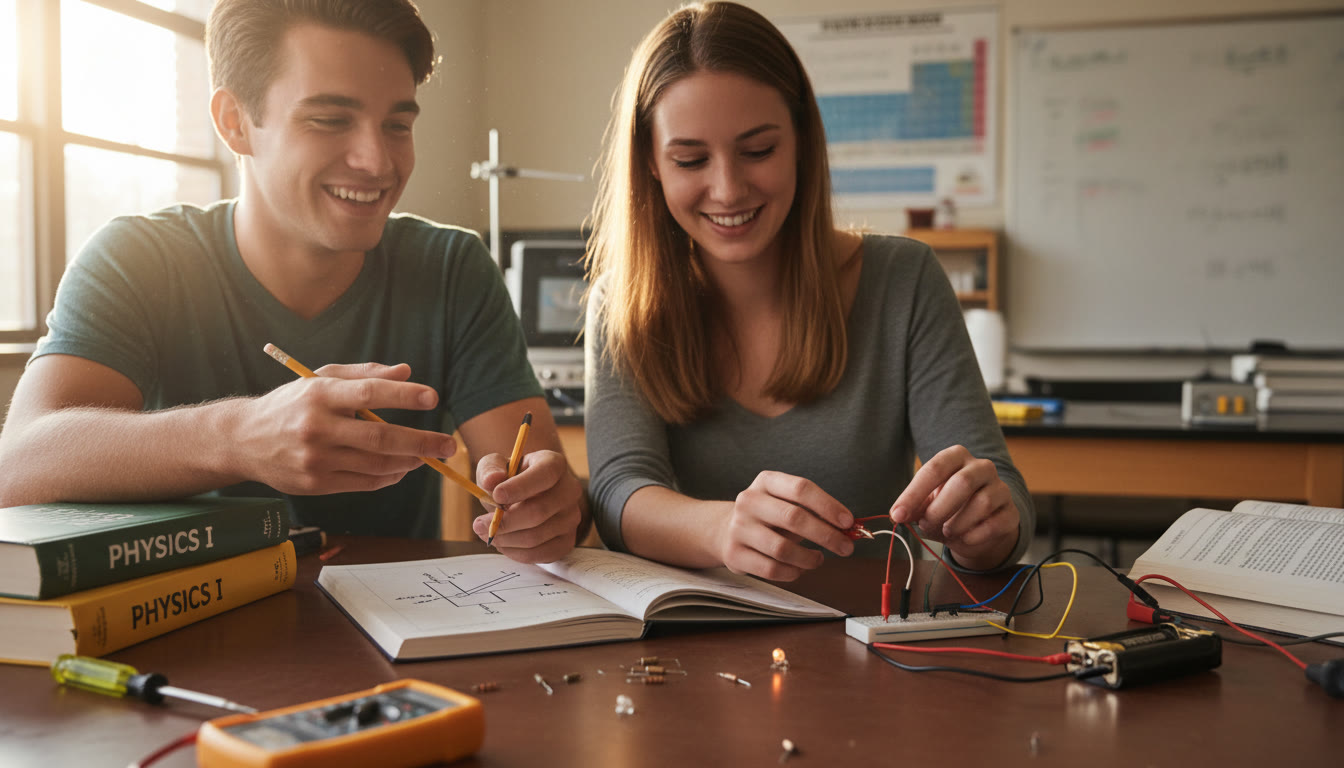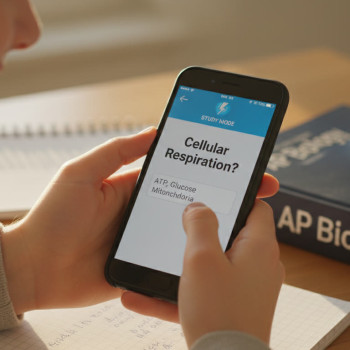Why sequencing AP Calculus and AP Physics C matters for future engineers
Planning which AP courses to take, and when, feels a lot like solving an engineering problem: constraints, dependencies, trade-offs and—if you do it well—elegant results. For students aiming at top engineering programs, the common pair AP Calculus (usually AB or BC) with AP Physics C (Mechanics and Electricity & Magnetism) is more than a résumé booster. It shapes how you think quantitatively, trains you to use calculus as a problem-solving tool, and gives colleges strong evidence that you can handle college-level STEM rigor.
AP Physics C courses are calculus-based and are intended to be taken alongside or after calculus study; the College Board explicitly describes both Mechanics and Electricity & Magnetism as calculus-based, college-level physics equivalents. This math–physics overlap means the order in which you take these classes matters for conceptual clarity and for maximizing learning rather than stress. ([apstudents.collegeboard.org]( Idea : A high school student at a desk solving a calculus-physics problem on paper with a small stack of textbooks labeled “Calc” and “Physics” nearby—warm lighting and a focused mood to convey disciplined but curious study.
Core principles for building your AP sequence
1. Respect the calculus prerequisite
AP Physics C problems are written with calculus in mind: derivatives for motion and integrals for work, flux and fields. Practically speaking, a student will get far more out of Physics C if they have at least concurrent enrollment in calculus—ideally AP Calculus BC or a strong honors calculus class. The College Board recommends taking Physics C while taking or after calculus. ([apstudents.collegeboard.org]( Mechanical intuition first, then fields
Mechanics (forces, motion, energy, momentum, rotation) forms the foundation for understanding how objects behave and how physical models are constructed. Electricity & Magnetism (E&M) builds on calculus tools but introduces field concepts and vector calculus ideas that often feel more abstract to learners. Many educators recommend tackling Mechanics before E&M so you have experience with calculus applied to physical systems before moving into fields and circuits.
3. Think of learning, not just credentials
It’s tempting to stack every AP on your transcript. But sequencing should prioritize deep understanding: taking BC and both Physics C exams in a rushed back-to-back way without adequate preparation increases burnout risk and can reduce scores. Balanced pacing, thoughtful review, and targeted practice will pay off more than a maximal checklist of APs taken under duress.
Typical sequences and who each one fits
Below are practical sequencing options that reflect common high school structures. Use them as templates—your school’s offerings, teacher schedules, and your own strengths should shape the final decision.
| Sequence | Year/Grade | Courses | Why it works |
|---|---|---|---|
| Conservative (Depth First) | 11th & 12th Grade | 11: AP Calculus AB or BC (11) + AP Physics C: Mechanics (12) + AP Physics C: E&M (12) | Gives calculus mastery before E&M; good for students who need extra time with calculus concepts. |
| Concurrent (Balanced) | 11th & 12th Grade | 11: AP Calculus BC (or AB) + AP Physics C: Mechanics (concurrent) | 12: AP Physics C: E&M | Mechanics benefits from concurrent calculus; E&M follows after exposure to calculus-based mechanics. |
| Accelerated (Ambitious) | 10th–12th Grade | 10: Precalc/Honors Calc | 11: AP Calculus BC + AP Physics C: Mechanics | 12: AP Physics C: E&M + higher-level math | For highly prepared students who want immersive, college-like pace and strong prep for engineering programs. |
How to choose among them
- Conservative: Choose this if you need a steadier pace or are strengthening calculus fundamentals.
- Concurrent: A common sweet spot if your school schedule aligns—Mechanics while doing BC calculus, then E&M afterward.
- Accelerated: Best if you already excel in math and physics, are aiming for elite engineering programs, and can manage heavier workloads.
Sample two-year plan (11th–12th) with study rhythm
This plan assumes a typical American high school calendar and aims to balance coursework, AP exam prep, and college application season.
11th Grade
- Fall: Start AP Calculus BC (or AB if BC isn’t available). Build strong foundations in limits, derivatives, and basic integrals. Begin weekly problem sets emphasizing conceptual understanding.
- Winter: Continue calculus topics (integration techniques, series if BC). If taking AP Physics C: Mechanics concurrently, schedule weekly physics problem practice linking calculus topics to motion/forces.
- Spring: Use the spring semester to take the first AP exam (Calculus) if it lines up, or to prepare for an end-of-year AP. Review past free-response questions and timed sections.
12th Grade
- Fall: AP Physics C: Electricity & Magnetism—apply your calculus experience to fields, circuits, and flux. Work on lab exercises and data analysis skills.
- Winter: Intensify exam practice with mixed problem sets (calculus + E&M). Start drafting engineering program essays and gather teacher recommendations from math/physics teachers who can speak to your quantitative work.
- Spring: Take the AP Physics C exams and focus on final college application polishing.
Study strategies that actually help—beyond flashcards
Active problem solving beats passive review
Doing physics and calculus means doing problems. Aim for deliberate practice: identify small weaknesses (e.g., setting up integrals for center-of-mass problems, or interpreting E&M diagrams), isolate them, and practice targeted problems until that pattern becomes familiar.
Use multiple representations
Translate problems between graphs, equations, and verbal descriptions. Physics problems often hide key insights in a diagram or a limiting-case check (what happens as time goes to infinity?). Learning to translate improves both conceptual grasp and exam performance.
Lab skills and experimental reasoning matter
AP Physics C emphasizes lab experience—design, data analysis, and uncertainty. Treat labs as opportunities to connect calculus operations (derivatives as rates of change; integrals as accumulated quantities) to physical observations. Colleges notice students who can reason about experimental design and error sources.
Practice past free-response prompts
Old AP free-response questions are the bridge between textbook practice and exam reality. They demand multi-step solutions and clear justification—exactly the skills top colleges covet. Time yourself and practice writing concise, correct solutions with labeled diagrams.
How to measure readiness: quick diagnostics
Before committing to an accelerated path, test yourself on a few representative tasks:
- Can you set up an integral to compute work done by a variable force? (Calculus + Physics)
- Can you confidently use derivatives to move from position to velocity to acceleration in multi-dimensional motion problems?
- Can you apply Gauss’s law qualitatively to argue about field symmetry and when a Gaussian surface is helpful? (E&M)
If you answer “mostly yes” and can do the calculations under timed conditions, concurrent BC + Physics C Mechanics is realistic. If not, give yourself a semester of focused calculus review before tackling E&M.
Scoring strategy: where to focus for AP exams
Both AP Calculus BC and AP Physics C exams reward conceptual clarity and correct method more than purely rote answers. For Physics C, the exam format typically splits time between multiple-choice and free-response sections that test mathematical routines, translation between representations, experimental design, and qualitative/quantitative translation. Practice all four. ([apcentral.collegeboard.org]( study calendar for a semester of Physics C: Mechanics (12-week plan)
Here’s a compact, modular plan you or your student can adapt for an intense semester course with weekly focus areas.
- Weeks 1–2: Kinematics and vectors—practice multi-dimensional motion problems and coordinate decompositions.
- Weeks 3–4: Newton’s laws, force diagrams—emphasize free-body diagrams and systems of particles.
- Weeks 5–6: Work, energy, and power—set up integrals for variable forces; conserve energy checks.
- Weeks 7–8: Momentum and collisions—solve impulse and conservation problems in 1D and 2D.
- Weeks 9–10: Rotation, torque, angular momentum—connect linear analogs to rotational formulas.
- Weeks 11–12: Review and timed practice—mixed sets, free-response practice, and lab-report refinement.
Using personalized help to accelerate learning (where Sparkl fits)
Many students benefit from targeted one-on-one guidance to close weak spots quickly. Personalized tutoring—like Sparkl’s model—can accelerate progress by designing tailored study plans, providing expert tutors who can explain tricky calculus-to-physics translations, and using AI-driven insights to diagnose patterns in missed problems. If you’re juggling AP Calculus BC and Physics C together, a tutor who can align math topics with concurrent physics lessons is particularly valuable.
Examples of what personalized tutoring can provide: focused weekly problem sets that address your specific misconceptions, mock free-response grading with constructive feedback, and pacing adjustments around college application timelines.
Common pitfalls—and how to avoid them
- Overloading senior year: Taking both Physics C exams and multiple other APs the same spring increases stress—stagger exams to maintain quality of learning.
- Ignoring lab practice: Skipping experimental reasoning is risky; practice writing short lab analyses and uncertainty calculations.
- Relying only on calculators: Calculators are allowed in many sections, but they won’t rescue a poor setup. Practice algebraic manipulation and dimensional checks.
- Memorizing formulas without understanding: Learn when and why a formula applies; test it with limiting cases.
How colleges view AP Calculus + Physics C
For engineering applicants, strong performance in calculus and calculus-based physics signals readiness for foundational college engineering coursework (mechanics, circuits, differential equations). Admissions officers look for both rigor and genuine mastery—high scores matter, but so does evidence that you can apply math to real problems. A thoughtful sequence and solid performance on AP exams tell a coherent story about academic preparation.
Comparing “take BC first” vs. “take Mechanics first”—a quick decision guide
| Approach | Pros | Cons | Who should choose it |
|---|---|---|---|
| Calculus First | Stronger mathematical foundation; E&M easier later | Delay in applying calculus to real physics problems | Students who need calculus confidence before physics |
| Mechanics Concurrent with Calculus | Immediate application of calculus; better retention via context | Heavier weekly workload; coordination of topics required | Students comfortable with time management and intermediate math |
| Mechanics First (with Precalc) | Builds physics intuition early; good for students strong in conceptual thinking | Some calculus-based techniques may feel unfamiliar until calculus is taken | Students strong in algebra/trig who want conceptual grounding first |
Real-world context: why engineers benefit from this pairing
In engineering, calculus and physics are not isolated skills—they form a toolkit for modeling, analyzing, and optimizing systems. Mechanics shows up in statics and dynamics classes for mechanical and aerospace engineers; E&M is foundational for electrical and computer engineers. The AP sequence helps you practice translating physical systems into equations, validating models with units and limiting cases, and communicating results clearly—skills you’ll use in labs, internships, and eventually, industry or research.

Putting it all together: a checklist before you commit
- Check prerequisites at your school: Which calculus and physics options are offered and when?
- Talk to your teachers: Ask whether they recommend concurrent calculus enrollment for Physics C classes.
- Self-assess math readiness: Can you comfortably differentiate and integrate, and set up integrals for physics contexts?
- Plan workload across semesters: Avoid stacking multiple heavy AP exams in one testing window.
- Consider targeted support: If you want efficient gains, look into personalized tutoring options (for example, Sparkl’s 1-on-1 plans that match tutors to your needs and give tailored study plans).
Final thoughts: sequence with purpose
Choosing the right order for AP Calculus and AP Physics C is both strategic and personal. There’s no single correct path for every student—but there are smart ways to align your coursework with your learning style, college goals, and life outside school. If you prioritize a strong calculus foundation before E&M, you’ll likely experience smoother conceptual progress; if you prefer immediate application, concurrent Mechanics with Calculus can reinforce both subjects through context. Either way, aim for depth over breadth: colleges and admissions readers value demonstrable mastery and thoughtful academic planning.
Above all, remember that good support shortens the learning curve. One-on-one guidance, tailored study plans, and regular feedback—services that Sparkl provides—can make the difference between scrambling to get a score and building reliable understanding that carries into college-level engineering work.
Resources to keep at hand (what to study weekly)
- Weekly mixed-problem sets (calculus + mechanics or E&M)
- Timed free-response practice once every two weeks
- Lab write-ups practicing experimental design and uncertainty analysis
- Short diagnostic quizzes to identify recurring error patterns
A final encouragement to students and parents
The road to engineering is a marathon, not a sprint. Thoughtful sequencing of AP Calculus and AP Physics C transforms a checklist of classes into a meaningful learning journey. With steady practice, deliberate problem solving, and the right support, students can prepare themselves for the rigor of college engineering programs and enjoy the process of becoming fluent in the language of math and physics.
Good luck—plan with intent, work with curiosity, and don’t hesitate to get targeted help when you need it. The combination of AP Calculus and Physics C is one of the best investments you can make in your engineering future.























No Comments
Leave a comment Cancel